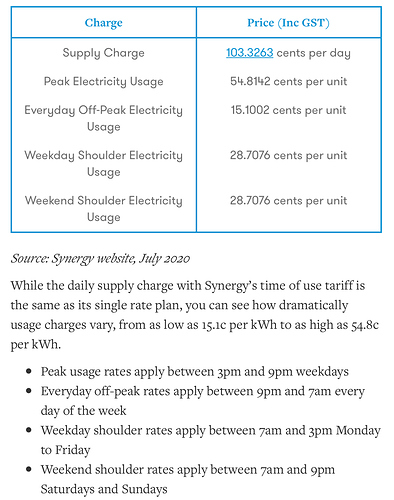I have a transcript of my web chat with AGL. It seemed easier than trying to email them a request. Especially since I failed to easily locate a customer email enquiry address.
Point 1
AGL apply Gst to every chargeable item on a bill.
Point 2
AGL also apply Gst to any credits due other than solar feedin tariff items.
Point 3
AGL does not add gst to any feedin tariff items.
Point 4
AGL add up all the charges including Gst before deducting any Credits.
Note some credits that include a Gst component also reduce the GST due.
Hence AGL apply Gst to all costs and charges before any feedin credit is applied.
It may not be apparent up front looking at a solar bill for the first time. The only GST amount shown on an AGL bill is the final amount included In the bill.
AGL could have a column next to each line on the bill with the applicable Gst amount (may be zero if exempt). For each line displayed it would be self evident. That’s how I was taught to show line items on an account by BHP and my accountant.
Alternately AGL could show the sub-totals of all the items to which Gst applies, and it would then be a simple 10% of the final sub-total prior to the credit for the GST exempt items (solar feed in).
Where subsequent bills include payment balance adjustments of prior bills, AGL’s bills as presented and the reconciliation of any gst credits may require some honours degree accounting assistance? 
I’ve left some polite and direct suggestions re how the Bills might be better presented with the AGL service representative in the Chat Session record!
I’m still amazed at how the companies providing public services such as power and phone (that’s you Optus) are permitted to be so evasive about how Gst is applied in their billing. Perhaps we are not meant to know!
It is interesting to hear that perhaps other electricity retailers only apply Gst to the difference between consumption costs and feedin credits? My guess is the ATO pulls in closer to $2B yearly in gst from residential electricity usage? This would be much less the more solar PV generated.
In one instance exported PV is being treated as though it is a marketable item, that is Gst exempt.
In the other instance exported PV is simply being stored for your future benefit and returned to you by the retailer. There may be a cost for the storage, eg like car parking, but it is just your power you are getting back at a later time. So how can you apply Gst to something you already own?
Another interesting consideration in how to get the best return on your solar investment.



